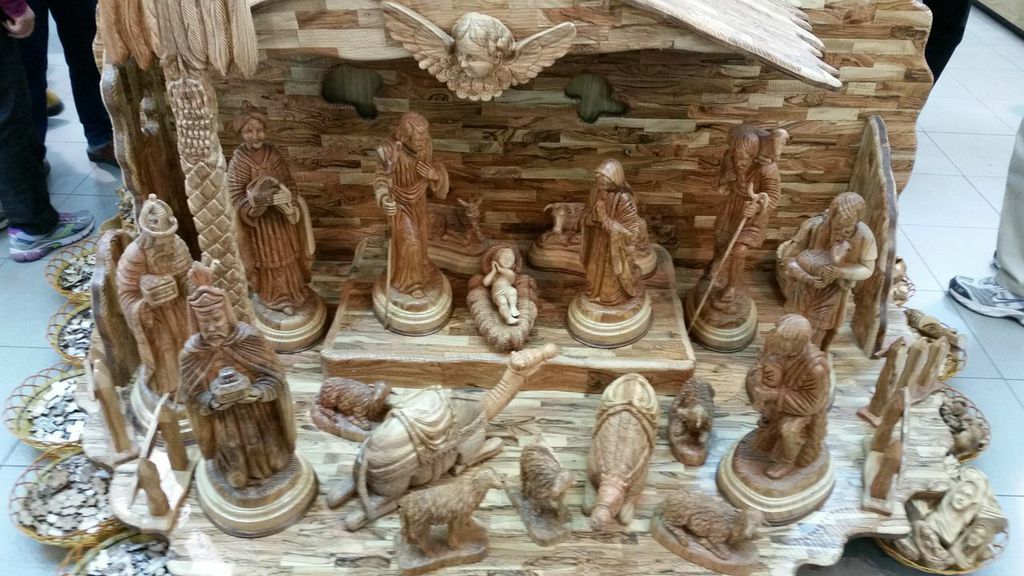I was standing in the Three Arches shop in Bethlehem looking at one nativity set after another, after another. They were all basically the same. Carved out of the native olive wood, they involved: 1) a barn; 2) animals (including camels); 3) a manger; 4) Mary and Joseph and the baby in the manger; 5) wise men; and 6) shepherds. It may surprise you to know that St. Francis of Assisi, a great lover of animals (‘All Creatures Great and Small’), was the first person, apparently, to cook up this little Christmas tradition nativity scenario. And unfortunately it is based on: 1) a false blending together of several nativity stories; 2) a misunderstanding of a key Greek term in Luke. Let’s talk about the latter first.
In Luke 2.7, we hear that Jesus is placed in a manger for a reason. The reason which is given is ‘because there was no place/room in the kataluma. Now this Greek word is not the word Luke uses to refer to a traveler’s inn. That word, which we do indeed find in Luke 10.34 in the form pandoxeion, in the famous parable about the Good Samaritan who takes the wounded man to the inn in Jericho. Elsewhere, when Luke uses the term kataluma for example in Lk. 22.11 in the story about the Last Supper the meaning is clearly ‘guest room’, and I would urge that is what it means in Lk. 2.7 as well.
In other words, all those sermons about ‘no room in the inn’ are based on exegetical nonsense. The holy family was not turned away from the Holiday Inn Express in Bethlehem. Bethlehem was on no major road, was a small village in NT times, and may not even have had a wayfarers inn! Instead what we are being told is that Jesus was born, in all likelihood not in a barn, nor in a cave (though there are some homes the back of which were caves in Bethlehem), but in the room in the back of the ancestral home where the beast of burden was normally kept— hence the manger being there. Most ancient farmers guarded there one prize work animal very carefully from theft. This meant putting the animal in the back of the house at night, and normally that animal would be an ox, not sheep or goats or donkeys, though the latter is not impossible.
The second major point to be made is that neither shepherds nor wise men were present for the birth of Jesus. In the Lukan account only we have shepherds coming shortly thereafter with no mention of wise men, and in the Matthean account we have no mention of shepherds but instead only the sages. While we are in demythologizing mode the wise men are not kings, in fact they are astrologers, maybe Persian astrologers following a star, or some sort of heavenly light (remembering that the ancients believed the stars were living beings, which explained their movement), possibly even following an angel that lit the way right to the house. And furthermore, the Matthean account says nothing about there being three of them– So enough with the ‘We Three Kings’ carol. They weren’t kings, and while we know there was more than one of them, we don’t know how many. The conclusion that there were three is based on the assumption that the three gifts must have come from three different persons, but this is not a necessary conclusion. Two or four, or six persons could bring three gifts. All we know for sure is that there were magoi plural.
What has happened to our Christmas celebration over time is rather like what has happened to great masterpieces over time— like the Sistine Chapel. In order to preserve it, a lacquer was placed over it, which aged, changing the very color and character of Michelangelo’s masterwork. But when the lacquer was cleaned off, a much more bright, and robust and colorful masterpiece was evident. Hear then the parable— we don’t need these extraneous revarnishings of the old Gospel story— it is vivid and vital enough to embrace in its unvarnished splendor.














